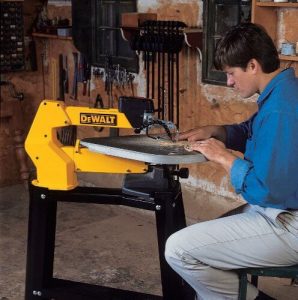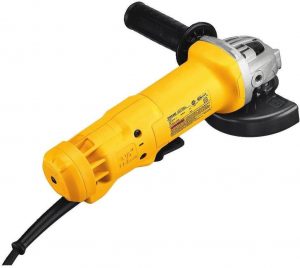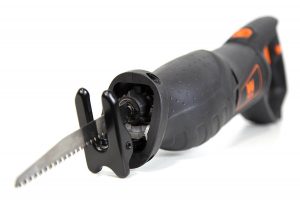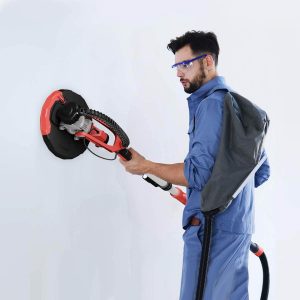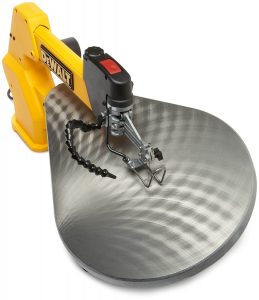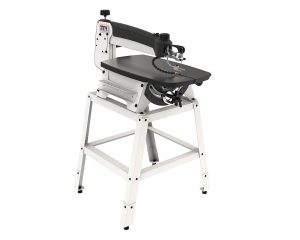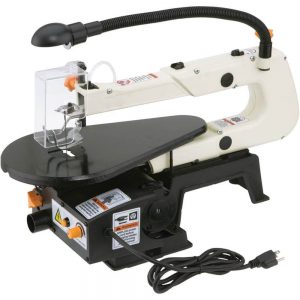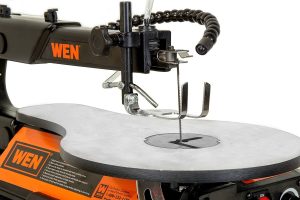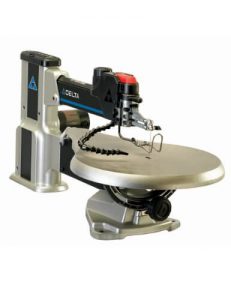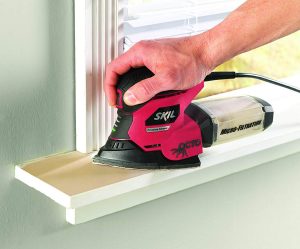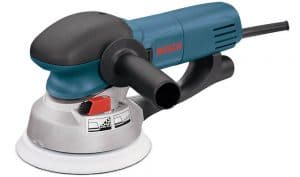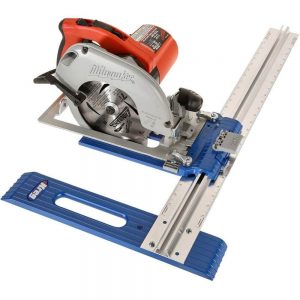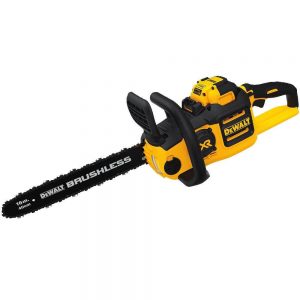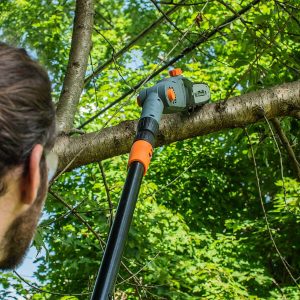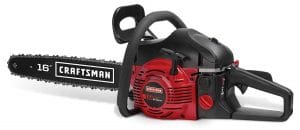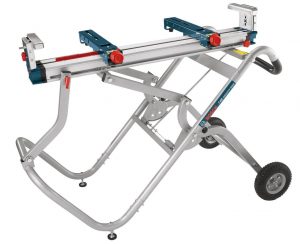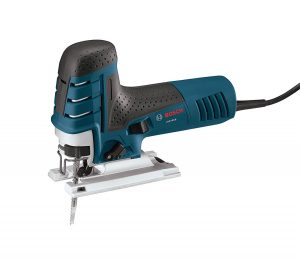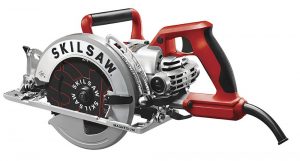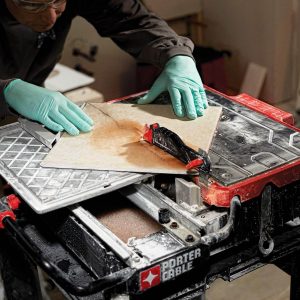Home Improvement » Saws » The Best Scroll Saws in 2024
Best Scroll Saws
Scroll saws are the foundation of advanced carpentry. While the table saw and miters get a lot of the credit, if you’re into fine woodworking and not willing to break out the hand carving tools then you’ll find having one essential.
Finding the best was next up on our list of challenges. After several hours of testing, we decided on a few models that we think are suited.
In This Article:
The 5 Top-Rated Scroll Saws
| Editor’s Picks | Brand | |
|---|---|---|
| Best Overall Scroll Saw | DEWALT DW788 | |
| Best Professional Scroll Saw | Jet 727200K Scroll Saw | |
| Best Scroll Saw for Beginners | Shop Fox W1713 | |
| Best Budget Scroll Saw | WEN 3920 | |
| Overpriced but Solid | Delta Power Tools 40-694 |
What is a Scroll Saw?
Scroll saws are basically big jig saws mounted in one position. The blade moves up and down, allowing you to cut through wood easily and securely to create intricate cuts that simply aren’t possible with many types of saw.
For most home carpenters a jig saw is a good choice. They still allow for advanced cuts but you’re moving a mobile saw through the workpiece. With a scroll saw, you’re moving the piece through the blade.
In addition, scroll saws have finer blades than most saws. They allow for intricate cuts with little touch up afterwards if you’re a skilled operator and even those who are still developing will find they’re an excellent way to cut curves, loops, and other patterns into wood.
Indeed, except for wood routers a scroll saw is probably the basic component of a workshop for those who are interested in artistic word working rather than simply utilitarian cuts.
How We Picked the Best Scroll Saws
Rather than going through professional carpenters this time around, we decided it would be best to start with skilled hobbyists. Scroll saws may not be much use on most job sites but for those who are looking to enhance their artistry they’re an excellent option.
Finally, we came down to a few qualities which we felt made the saws stick out from the pack.
Blade Types
Like any other type of blade, what you’re doing will determine the TPI and length needed.
With scroll saws there are two different types of blade.
Plain-end blades are thinner and are held in place by clamps at both the top and the bottom. They have a flat profile and take up minimal space when you’re threading them through holes to create more intricate projects.
Pin-end blades have a small pin that sets into hooks on the top and bottom of the saw itself. While they’re quicker and easier to change they also aren’t as suitable for those who are doing very intricate work. We recommend staying away from them, unless you’re planning on only making exterior cuts.
We tried to avoid saws which do both. It’s better to go for a single blade type and we strongly recommend sticking with plain end blades for the most part. They’re harder to switch in most cases, but they’re also… well, they’re just plain better for the intricate work a scroll saw is meant for.
Throat Capacity
Due to the design of a scroll saw, the amount of space behind the blade can become an issue with larger projects. You’ll hit the arm and then the wood won’t be able to go anywhere. With the right amount of space it’s not something you’ll need to worry about.
We found 18” was a good capacity, with anything bigger making the saw a bit unwieldy for many home workshops. For specialized applications where it’s needed you can use larger saws.
Arm Types
There are a few different types of arms available on scroll saws.
The usual find is the parallel arm which is still a gold standard. It’s also the safest type to run, the upper arm will swing free if a blade breaks and cease the motion of the machine. C-type arms produce a curved cut along the range of the blade’s path but if the blade breaks the top half of the saw will continue to run.
The other types are minor innovations over the parallel arms, including the double parallel arm.
Rigid arms are rarely used at all, the most recent comeback of this type of saw has already been discontinued. Some extremely high-end, custom saws use an orbital motion which provides a smoother cut but most people will be fine with parallel arms and that’s what we recommend for the hobbyist.
Variable Speed
This was hotly debated among our team. The general consensus was that single speeds are pretty lame, not allowing you to modify the speed for different types of wood.
High-low speed options are a much better choice if you’re on a tight budget and seemed to allow us to cut through most things without having to put out too much effort. True variable speed is desirable for the more advanced hobbyist, particularly if they enjoy working with different types of woods.
Blade Lock Mechanism
There are several different mechanisms around, but our favorite all allowed us to change blades without having to break out the tools.
This is more important than you might realize, as even if you use the same blade through a whole project you’ll likely have to remove and reposition the blade frequently. Having to break out the tools and spend three minutes moving the same blade into a pilot hole is aggravating at best.
A quick release for a plain-end blade is ideal but not available on many of the cheaper saws on the market.
Table Tilt
While it’s not important for everyone, many of the woodworkers we talked to recommended them. Many scroll saws will tilt up to 45 degrees in at least one direction. Being able to add another dimension to your cuts is essential for some projects.
The best tilt both ways, but it’s not always possible to find one which holds well at the prices most consumers expect.
Pricing
Expect to pay at least a hundred dollars for a cheap saw, around three hundred for one suitable for more intricate hobbyist work, and over a thousand for something meant to be used in a shop at least forty hours per week.
They’re not the most expensive saws around but they’re definitely not cheap either. The more you spend, the better off you’ll be with diminishing returns really only suitable for professionals starting at about the five hundred dollar range.
Other Things to Look For
You’ll notice we didn’t make a big deal out of cutting capacity (which maxes out at around 2” for this kind of saw) or power like we normally do. That’s due to the nature of the work that scroll saws are used for where too much power isn’t going to do you any good.
Instead, look for accessories like foot pedals, lights, and dust collection systems.
Minimizing vibration is key. The biggest difference we found, apart from some basic functions, between a good scroll saw and a great one is in the vibration. Since intricate work is the name of the game with this kind of saw the less vibration you have the better off you’ll be.
We also didn’t move the saws much, and we feel like most scroll saws are destined to be in one place for most of their lives. For those who take them on-the-go, or just don’t have the space to keep the saw constantly on the bench, the weight of the saw is also something to look at.
Author:
Popular Articles:
Top 5 Scroll Saws
After extensive testing, we’d like to bring you our favorites and one saw which barely made the cut. All of them will add a new dimension to your woodworking abilities while minimizing the hassle involved. Each is well-suited for a particular type of woodworker, so read on and see if any of them look like your next big workshop addition.
Best Overall Scroll Saw
DEWALT DW788
The DW788 at a Glance:
- Throat Capacity: 20”
- Arm Type: Double Parallel
- Tilt: 45° in Both Directions
- Blade Type: Both
The DW788 was undoubtedly our favorite. While the price might seem high, it’s right at the sweet point where you get the most bang for your buck.
First things first: vibration. There’s virtually none, which owes to the double parallel arm and the heavy base. The blade lock also allowed us to quickly change blades or remove them in order to make separate interior cuts.
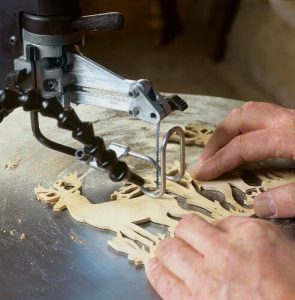
Our only issues are the lack of a foot pedal from the factory and the fact you’ll have to buy a stand or DIY one if you don’t have a suitable bench.
Our Opinion:
Overall, this saw is smooth, powerful, and has all of the features we believe are great for hobbyists and professionals alike. This is our top pick for a reason, and in this case finding flaws with the model we used just felt like nitpicking.
- Extremely low vibration
- Arm lifts for blade replacement
- Quickest blade release of all models we tried
- Double beveled table
- No included stand
- No foot pedal included
Best Professional Scroll Saw
Jet 727200K Scroll Saw
Remember what we said in the pricing section about diminishing returns? We can’t recommend paying for the Jet 727200K for most hobbyists, it’s nearly double the price of the DeWalt at the time of this writing and only offers a little bit more.
The Jet 727200K at a Glance:
- Throat Capacity: 22”
- Arm Type: Double Parallel
- Tilt: 40° left, 45° right on the arm
- Blade Type: Plain-end
This offering from Jet might be a little bit much for the average person at home, but the advantages offered to the professional are hard to ignore. Really most of the price increase seems to come from little innovations.
Changing blades with this one is even easier than the DeWalt. The arm lifts as well, and the tensioning and clamping mechanisms are controlled from the same lever helping to speed up workflow.
The blade tilts instead of the table in this case. It might take some time to get used to but we found this to be pretty nifty for our amateur efforts at testing the saw.
It’s really the base that caught our attention. There’s a slot to slide blades in, making the quick-change even more convenient, and it has a movable blade storage system for those who want to keep everything in one place.
Our Opinion:
While the whole thing is made to be convenient and even easier than the DeWalt we favored, it’s really up to you to decide if the little bits of convenience you gain are worth the cost of entry.
- Super-fast blade change
- Slotted table
- High build quality
- Enormous throat capacity
- Expensive for the home DIYer
- Too much for most beginners
Best Scroll Saw for Beginners
Shop Fox W1713
The W1713 at a Glance:
- Throat Capacity: 16”
- Arm Type: Parallel
- Tilt: 45° to the Left
- Blade Type: Both
For those who are just getting started, and know they’re serious about learning to scroll, the Shop Fox W1713 is a budget pick that performed quite well.
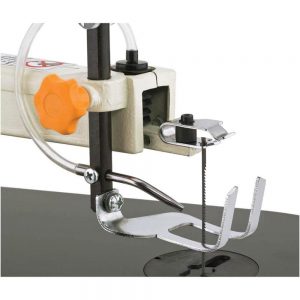
And that was the main complaint with this saw. While fine control of the workpiece is pretty much a requirement for any scroll saw this one seemed exceptionally slow. Even pine would begin to bind the blade, which is a recipe for breaking things.
That said, it’s not really designed for putting out production pieces and makes no claims to be the greatest saw on the market. It’s a bit finicky but we were able to dial it in pretty quickly during testing.
Our Opinion:
If you’re looking for a solid, dependable saw and aren’t ready to go for the DeWalt that was our top pick, this is a good option. We think it will be frustrating for those who are already working quickly however.
- Excellent light
- Blower included
- Takes all scroll saw blades
- Solid construction
- Underpowered
- Changing blades is a pain
Best Budget Scroll Saw
WEN 3920
The 3920 at a Glance:
- Throat Capacity: 16”
- Arm Type: Parallel
- Tilt: 45° to the Left
- Blade Type: Both
WEN does a great job at making innovation with their technology, but oftentimes corners end up getting cut. What you end up with is versatile, budget tools but nothing world changing and this one is no different.
The specific innovation we’re talking about here is that the blades can be inserted at a 90° angle, allowing you to work around the 16” throat capacity. There’s also a great LED light included, which was the best of any of those we tested that weren’t an aftermarket addition.
There’s also onboard storage, which is a nice touch for those who don’t have a set up already.
Unfortunately, the build quality is a bit low here and like the ShopFox it’s a “what you see is what you get” system when it comes to the variable speed controls.
Our Opinion:
If you’re looking for a cheap scroll saw, this is what you need. On the other hand, those who plan on using one frequently may be better served.
- 90° rotation on the blade
- Super low priced
- On-board storage for blades
- Great light
- Feels “cheap”
- Motor doesn’t compensate, leading to binding
Overpriced but Solid
Delta Power Tools 40-694
The 40-694 at a Glance:
- Throat Capacity: 20”
- Arm Type: Double Parallel
- Tilt: 45° to the Left
- Blade Type: Both
We don’t want to knock on this tool too much. In practice it worked better than the cheaper models on our list, but not enough better to justify the price. The throat of the Delta 40-694 is also 20”, so it’s a bit bigger as well.
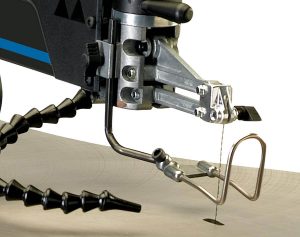
The biggest culprit was vibration. It felt like it was going to bring the garage down but after checking we saw it wasn’t lubricated and that sorted itself out with some oil. There were other little things like that but once tinkered with it worked well enough.
All of our complaints are really aimed at the price point. It’s just not the best way to get the value out of your dollar.
Our Opinion:
This is a solid scroll saw, suitable for an amateur who doesn’t mind working on their tool set up. We just feel it’s priced out of the range it should be in.
- Solid construction
- Variable speed control
- Good light
- Took a lot of “tinkering” to dial in
- Overpriced
Scroll Saw Project Types
While many people are aware that scroll saws are required for just about every fine wood project, they’re pretty much ubiquitous. Toys, fine woodworking, artistic design, all of these can be done in thin wood with a scroll saw.
For those who are just getting their first saw, we recommend picking up a guide to basic techniques. It’s a great help, and like many saws they’re even more versatile than they appear at first glance.
If you’re just getting into woodworking, then your first projects will probably be small toys. They’re simple to do and finding a book on them is… well, it’s child’s play. We recommend Making Tiny Toys in Wood which has a bunch of projects that look nice and can be done with just a scroll saw and a drill.
For the more advanced woodworkers, fretwork is often appealing. Fretwork involves removing inner portions of a piece of wood to create a negative space effect. It’s not easy but most people can learn to do their own by starting with a book of patterns.
For those who are really to push the limits of what they can do there are tons of designs available for intricate, mechanical devices… that are made with wood. We recommend the Big Book of Gizmos & Gadgets for anyone interested in that sort of thing.
And, of course, there are tons of free patterns and guides available on Google and in other places.
Tuning Your Scroll Saw
If this is your first go-around buying your own saw be aware that even the best will need a little bit of extra work to get them perfectly to your liking.
You’d never think of having to work on something like a circular saw just to get going properly but… a circular saw just needs to rip boards. A scroll saw makes some of the most intricate cuts around, brute force isn’t their forte.
Most of the tuning goes into blade tension. Too tight and you run the risk of snapping off a blade, too loose and you’ll get some serious wobble that can ruin an intricate cut. Make sure you have some scrap on hand during the process.
Common Modifications
Few people feel the need to modify their reciprocating saw, but as scroll saws are used in such a wide variety of precise artistry you may want to take a look into some of the stuff the pros do.
One of the most common modifications is a foot pedal switch. Since this switch will allow your foot to control the on/off portion of the machine you’ll be able to make steadier cuts without worrying about the saw running off on its own.
It can also keep some machines from continuing to run after the blade has broken.
Others like to modify the table to their liking. A 1” piece of plywood cut square with a hole drilled in the center is a common way to do it, usually with a size roughly equal to the throating of the blade.
Lastly, lubricate the work surface. On cast iron you don’t want to catch a ridge or burr and wood can bind together. The less friction the more you’ll be able to focus on your work.
Scroll Saw FAQ
As always, we’re looking to answer your questions before you have to ask them. If we missed anything be sure to ask us below and we’ll get back to you as soon as possible.
What type of blade is best?
As usual, there is no “best” blade. Which is suited for you will depend largely on what the project you’re working on is. In general, higher TPI saws will cut finer but slower. Very thin kerf blades are great for intricate fretwork, but might not be right for something thicker. There are also specialty blades for material like bone or metal available.
How can I tell if the tension is right?
When we were asking around the best hint we were given was to apply some pressure to the blade and let it “sing.” We used a small screwdriver and a very light tap to produce a tone. Too high meant it was too tight, too low and it was too loose. The right tone takes some practice, but you should get the hang of it quickly.
Why are they called scroll saws?
They were originally developed to cut what is known as a “scroll pattern.” If you’re really interested in the history of scrolling then you’ll find Wikipedia has a good overview of the artform.
How do I cut interior curves with a scroll saw?
You’ll need a drill to create the hole, then you thread the blade through the hole and attach it before starting the saw and continuing to cut along the pattern. This is one of the biggest reasons we recommend going for plain-end blades even if they’re a bit trickier to change out.
What tools best accompany a scroll saw for ______?
If you’re interested in doing projects but don’t know what you need right out of the gate, then you’re in luck. A drill, a set of bits, and some wood glue is often enough to complete fantastic pieces with a scroll saw. Sand paper, rasps, and files are also a good idea for finishing up but unlike many woodworking projects… what is done with a scroll saw is often done with just the saw itself.
What’s the best way to avoid breaking scroll saw blades?
If you’re frequently breaking blades then one of two things is happening. You might have the blade too tight, in which case you’ll want to tune it in more next time, or you might be going too quickly. Scroll saw blades are delicate and a bit of lateral tension can cause them to break. It’s possible to move quickly with a good scroll saw but it takes a long time to develop that sort of feather touch.
What’s the difference between a band saw and scroll saw?
Band saws run a band through the whole machine, while scroll saws move up and down with the same portion of the blade. Band saws can make some great curves but for artwork nothing is going to beat a scroll saw.
Is there any other way to make interior cuts?
You could use a coping saw or a fret saw, both of which are made to cut in the interior of a piece. Some purists swear by them but we think the time and effort saved will add up over the course of a single afternoon for most artisans.
Hey, I didn’t see a safety section here…
That’s not a question. But seriously, while they can cause severe lacerations it’s rare that someone gets seriously injured by a scroll saw. Make sure to wear safety goggles, however, as flying bits from the blade will make a mess of your eyes in the event of a break. There’s little risk of pulling or kicking like with a table saw, they’re more controlled than a handheld power saw, and the blades are quite small.
Does every DIYer need a scroll saw?
Not really. They’re a pretty niche use saw… but that niche covers basically all artistic woodworking that’s not done with hand tools. For around the house tasks they’ll mostly be used for cosmetic purposes.
Ready for a Whole New Level?
We think that every would-be artisan deserves a chance to make sure they have the best scroll saw around. Take a look into this world and things become clearer, they’re an artisan piece more than a workhorse.
If you’re ready to begin a new artistic journey, then why not treat your shop to the ability to make intricate, beautiful cuts today?
.
Author:
Popular Articles:

